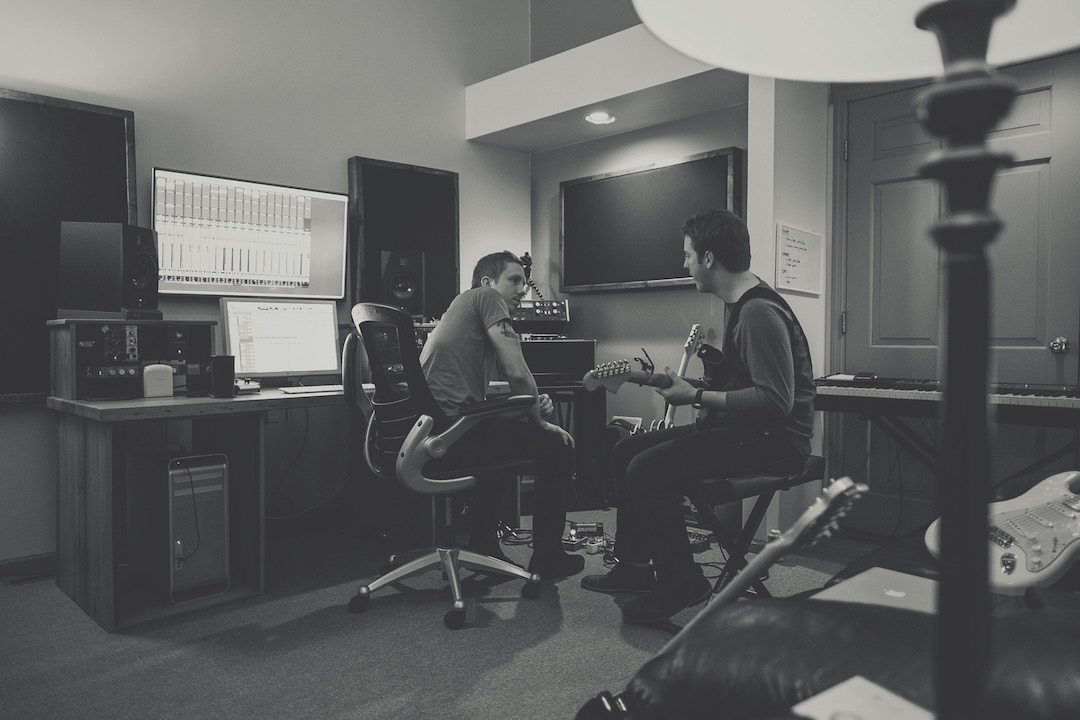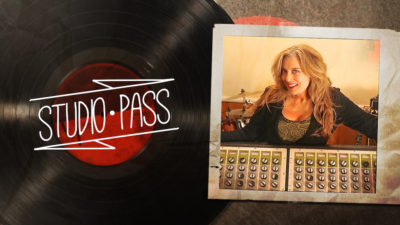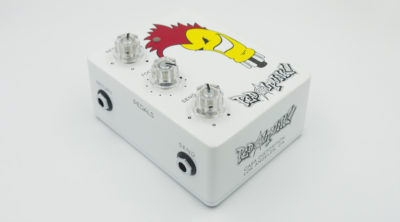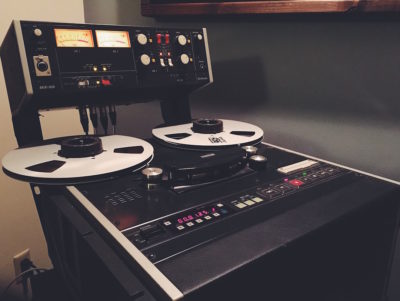4 Easy Ways to Integrate Outboard Gear Into Your DAW-Based Productions
“Learn the rules like a pro, so you can break them like an artist.” – Attributed to Pablo Picasso

The author, Jeremy Steckel, in his own studio Revelator Sound, where he often integrates analog gear into his DAW-based approach.
When we produce music, we owe it to ourselves and our listeners to create something unique.
It’s all-too-easy to fall in the trap of having “our way” of doing things and getting sounds in the studio, and forget that a little bit of experimentation can help us get us some innovative and noteworthy results.
It’s especially easy for this to happen in today’s increasingly all-digital environment, where it’s easier than ever to pull up the same templates and the same presets for mix after mix.
Today, we’ll look at 4 distinct ways that you can challenge your digital routine to get some new, creative, and original sounds in your productions by integrating outboard gear into your digital production process.
1) Re-amping your tracks
One easy, interesting and effective method to introduce a little analog unpredictability into your session is to simply re-amp tracks through a guitar amp, recording them back into your session.
This can be more fun, more visceral and more random than simply relying on a plug-in amp simulator. You can use this approach on much more than just vocals, too. One of my favorite rock producers, Joe Barresi, used a similar technique on Josh Homme’s vocals on the seminal album Lullabies To Paralyze by Queens Of The Stone Age. Back in 2005, Barresi told Sound on Sound that:
“A lot of the vocals went right into Pro Tools, through several preamps. Some of the vocal sounds were pretty complex: sometimes they were treated, or I’d use an additional mic that was slightly overdriven, or they were sung through an amplifier or a Leslie cabinet, things like that.”
Personally, I love using the tube-driven vibrato from my Fender Deluxe Reverb to give tracks some much-needed character. Reamping vocals and other tracks through guitar amps can give a wonderful sense of space, and allow for tremendous variety in mic choices, placements, amps and amp settings.
Speaking of reamping…
2) Using guitar pedals as outboard gear
If you get one takeaway today, let it be this: Reamp boxes can be an engineer’s best friend!
They’re quite cheap and can serve a wide variety of purposes. Many of us, and many of the artists we work with already have lots of outboard gear in the form of guitar pedals—so why not integrate them into our mixes?
One particularly useful pairing is to run a snare drum through an overdrive pedal, blending it back into your drum buss. Try using that old delay pedal as a dark, haunting echo on the lead vocal.
If you want to get even more hands-on experience with your guitar pedals, a new product called the PEDALpUNK! serves as a direct link between your pedals and your DAW, giving you full control over the send, return and “focus” settings.
Whatever reamp box you settle on, it should provide you with years of creative inspiration for your mixes.
3) Printing tracks with effects through a tape machine
Even if the bulk of your process is completely DAW-based, a tape machine can be an incredibly handy tool to have in the studio.
When it comes to creative techniques, it doesn’t necessarily have to be a great one, either—any reasonably working tape machine will do.
One trick I love is to send a track or group of tracks, with all their associated effects, through a tape machine and print it back into the DAW as a single stereo audio track.
Besides the obvious benefit of reducing CPU load, this can help force us to commit to sounds. The tape will also impart a very nice “meshing” effect to the original source audio and their effects. And if the effect is too much, you can always run it in parallel with the original track.
If you don’t have the ability to get your hands on a tape machine, you can always take this same approach by processing your tracks with a virtual tape plugin. But where’s the fun (and unique character) in that?
4) Tape machine as echo machine
Our last tip offers one more creative way to use a tape machine that goes back in time and beyond the usual:
You can use an old a tape machine as a unique stereo echo unit by sending tracks out to it using an aux channel in your DAW.
By keeping the tape machine in record and sending tracks to that channel, you’ll get a really beautiful, dark, and full-sounding slapback echo that you can record back into your DAW.
This happens because of the slight delay between the record and playback heads on the tape machine, and having the ability to slow down or speed up the machine can allow you to fine-tune your delay. You even have the option of interfering with the tape by pressing against it or the tape hubs using a finger or pencil eraser to get a memorable “flanging” effect.

Sylvia Massey provides details on achieving this classic tape flanging effect in her masterclass with CreativeLive.
For more details, check out the inimitable Sylvia Massey as she explains how to achieve these effects in her Masterclass with CreativeLive.
This is an incredibly useful technique for vocal and guitar processing, and there are even full drum mixes that call for this sound.
Keep in mind that you’ll need to print that aux channel back into your DAW in order to save the sound, but having it on a single fader opens up some interesting and unique echo textures.
Summing It Up
These techniques, while useful and creative, may not revolutionize your recordings, but taking the time to try new ways of working will force you to really listen and be more intentional in crafting your sounds. As you turn off auto-pilot and become more intentional and present in your work, you may just help create more original and riveting music as a result.
Don’t be afraid to spend 15 extra minutes on your next project experimenting with new ways of accomplishing the old same tasks. Sometimes, efficiency can be overrated, and a little change in your context can get you thinking, hearing, and mixing in a whole new way.
Happy experimenting!
Jeremy Steckel is an audio engineer/mixer from Columbus, Ohio, who runs Revelator Sound.
Please note: When you buy products through links on this page, we may earn an affiliate commission.








